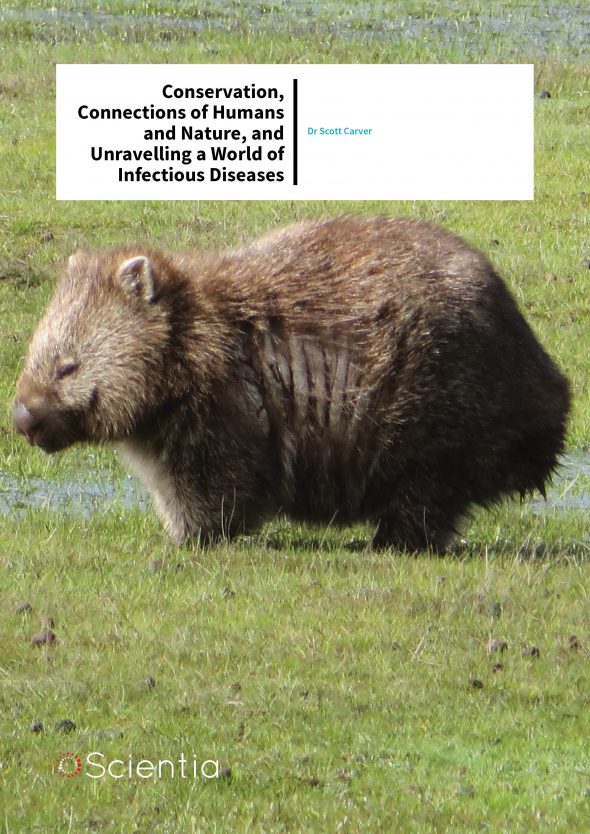Dr Scott Carver – Conservation, Connections of Humans and Nature, and Unravelling a World of Infectious Diseases
Dr Scott Carver and his team at the University of Tasmania use a multidisciplinary approach to study the spread of disease within and among wild animals, their domestic counterparts, and humans.
‘No man is an island,’ says the poem, ‘entire of himself.’ It was intended to remind us of the many connections we hold to those around us – our friends, neighbours, and acquaintances. But there are other networks which surround us, just as important and yet often overlooked. These are ecological connections we have to the natural world through the food we eat, the air we breathe, the environment we live in.
These connections are brought sharply into focus by infectious diseases. Recent rises in wildlife pathogens causing global headlines of disease in humans (Ebola, swine flu and SARS for example) and vice-versa for wildlife (canine distemper virus, amphibian chytrid fungus, bat white nose syndrome) highlight our intimate connections with the natural world. For example, a virus moving from a rodent, a bat, a sick bird, or a pig, can adapt to a human, who can infect others, who may travel and spread the infection to new locations. Suddenly you have a runaway epidemic causing quarantine zones across the world. The small-scale connections we have with our local ecology have a major effect on our global society, and vice-versa.
Wombat-Scale
So let’s take a step back and focus on the small scale. These headline problems often overshadow the less-known yet vitally important problems occurring via the spread of disease in local animals. A little-known yet devastating example of this is currently occurring in Australian wombats. Wombats – cute, ground-dwelling, chunky marsupials with big noses – can be found in burrows scattered across the south-eastern parts of Australia. Their populations are currently under attack by sarcoptic mange – a disease caused by the S. scabiei mite – which is widespread across their populations. Sarcoptic mange is a serious disease which, if left untreated, almost inevitably leads to death of the host – and indeed is currently killing large numbers of wombats. Similar problems are seen in other native Australian animals – Koalas are currently heavily affected by chlamydia infections which lead to blindness, infertility, and death, while transmissible facial tumours are currently decimating the Tasmanian devil population.
‘I saw the dramatic impacts invasive diseases could have on wildlife populations and this shaped the direction of my research’
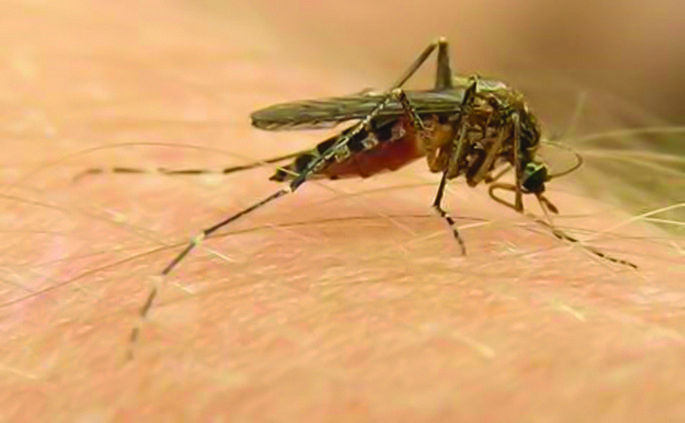
It is at this point that Dr Scott Carver and his team at the University of Tasmania enter the picture. Dr Carver’s work is multidisciplinary, covering a number of fields of research. ‘Fundamentally,’ he commented, ‘I am interested in the conservation and health of wildlife and ecosystems, and also in the connections between humans and their domestic animals to the natural world. I have a relatively broad research portfolio, with key systems: disease transmission in puma and bobcats; sarcoptic mange in wombats; chlamydia in koala and agricultural animals; and mosquito-borne disease transmission.’ Dr Carver has taken an international road to his current role, starting out in New Zealand with a focus on a fungal disease threat to amphibians. He then moved across to the University of Western Australia where he gained his PhD studying the ecology of the Ross River virus. The virus, a mosquitoborne disease, leads to severe arthritic joint pain and chronic fatigue-like symptoms in humans. The virus naturally cycles between marsupials and mosquitoes, spreading to humans under particular circumstances. We asked Dr Carver for more details on his early work. ‘As an early graduate student,’ he replied, ‘I became fascinated by how pathogens could spread from one species to another – termed “spill-over”. This has important health and population consequences for humans, domestic animals and wildlife and, in my eyes, shows the intimate connections between humans and the natural environment. This shaped the direction of my research, spanning health and conservation. As I progressed in my career I also grew to love the discovery of new knowledge associated with science.’
This focus on invasive diseases and their human/animal interaction continued with his move to the University of Montana, where he began to study the Sin Nombre hantavirus. Sin Nombre (the ‘nameless virus’) is found in native mice found across almost all of the United States, and it can jump across to humans who inhale dust in buildings contaminated with virally infected mouse faeces and urine. The viral infection leads to flu-like symptoms and a pulmonary oedema in humans – an inability to breathe which kills a third of those infected. Dr Carver’s work used the ecology and epidemiology of the mouse and virus to improve knowledge of disease outbreaks and environmental factors underlying transmission. This research was able to show that a combination of arid environments and seasonal changes in mouse behaviour are likely significant factors for human infection during Sin Nombre virus outbreaks.
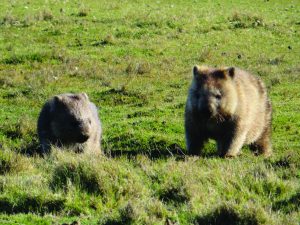
Wild Cats and Viral Loads
Another move brought him to the University of Colorado, where Dr Carver examined cross-species exposure and transmission between domestic cats and their wild counterparts – bobcats and pumas. With several publications on both feline disease transmission and on prion diseases in wild deer populations, his success was able to set the stage for much of his current and future collaborations. In 2014 he and several other researchers were awarded a prestigious $2 million grant from the US National Science Foundation with the goal of understanding how environmental factors and wildlife management programs affect the spread of infectious disease in puma (also known as cougar, mountain lion and panther) and also bobcats. Building upon their previous work involving extensive field sampling across multiple areas of the US, the group uses cutting edge host and viral genomics and mathematical modelling to examine how disease spreads through animal populations, and how this spread is affected by actions such as hunting, animal relocation, habitat fragmentation and urbanisation. Wideranging species such as pumas are of particular interest to researchers due to their pivotal ecological roles as apex predators.
The team’s previous research – examining a suite of different pathogens among puma, bobcats and domestic cats – has shown that transmission between species is relatively rare. Pathogens rarely make the jump from domestic to wild animals or vice-versa. However, once that jump has occurred and the pathogen is able to gain a foothold in the new host species, then the spread within the new host species can be self-sustaining. While this research may appear far removed from humans, the reality is that animal diseases are far more relevant to human health than we like to believe, with spill-over of disease between species acting as a major contributor to human health. We need look no further than recent high profile examples such as Ebola, SARS, Hendra virus and pandemic influenza.
This research led to other subjects, as it so often does, and Dr Carver’s work then moved beyond specific pathogens to the general processes by which pathogens spread amongst and between groups. Research performed with his collaborators led to the finding that the majority of newly discovered pathogens in wildlife are due to exposure to humans, domesticated animals or invasive animals introduced by humans. This was observed worldwide in fish, amphibians, birds, and mammals.
Bound for Van Diemen’s Land
Dr Carver returned to Australia in 2012, taking up a position at the University of Tasmania in the School of Biological Sciences. His research interests in Ross River virus and feline diseases were quickly joined by further interests covering diseases affecting marsupials and other Australian native animals (primarily wombat mange, koala chlamydia and Tasmanian devil facial tumour disease). While everyone is aware of the role infection plays in our normal lives (we’ve all experienced the flu, after all), the effects of disease on wild animals are often underestimated and poorly understood. This is partly because of a lack of research into the field and also due to the sheer complexity of the problem. As Dr Carver comments, ‘pathogens can have such pervasive impacts in the natural world, yet their impacts are often enigmatic – requiring real creativity to unravel and influence.’
The approaches used by Dr Carver’s group are as varied as the problems they study. They perform field studies on pathogens and host organisms, and field and laboratory experiments to understand disease impacts and transmission, and use mathematical modelling to determine the underlying processes. In the course of doing this they seek to answer questions, such as – how exactly do you know where a disease outbreak has come from, how quickly it will spread, and what factors will affect the growth of the outbreak? If a cure or treatment can be developed, where should it be targeted for maximum impact, and how can we support it? Complicating this is the simple fact that the real world is messy, data is difficult to come by and has missing pieces – answering these questions requires ‘real creativity’.
This ecological and epidemiological approach can be seen in the team’s efforts to combat the pathogenic disease, sarcoptic mange (caused by a skin burrowing mite), which affects wombats across their range. The mites in question, known as Sarcoptes scabiei, feed on skin cells, blood and serum by burrowing into the skin. Adult mites mate on the skin surface and then the females tunnel into the skin, laying eggs as they burrow. The larvae hatch, burrow out of the skin, before burrowing into hair follicles where they pupate into nymphal and adult stages. The entire process takes two to three weeks and leads to very severe symptoms, including irritation, hair loss, thickening and cracking of the skin and loss of body condition – the wombats themselves rapidly become emaciated and weak. Without treatment, an affected wombat will die, slowly and painfully. The mite was likely introduced to Australia by European settlers and their domestic animals – S. scabiei is found across the world in species as diverse as dogs, cats, buffalo and humans. From there the mite spilled over into Australian wildlife, with new variants developing for the multitude of new host species.
‘Mange is the most important disease of wombats,’ comments Dr Carver, ‘and it is capable of causing dramatic population declines. It also occasionally affects other marsupials in Australia, including koalas.’ His team works with the community, government and volunteers as field researchers, keeping track of wombat health and determining the spread of parasitic mange, as well as testing ways to control it. This is coupled with studies on the physiological and immune responses of wombats to mange infection, as well as studies to characterise the genomes of both wombats and the mange mite. The intention is to better understand why mange affects wombats so badly and how it can best be controlled.
This expertise is also part of a concerted effort to understand the impacts of chlamydia in koalas and develop a vaccine against it. Chlamydia pecorum is endemic amongst many wild koala populations, where it can lead to infertility, blindness and death. It also occurs in agricultural animals, from which it may spill over to koalas. Treatment of koalas requires doses of antibiotics that are generally not possible to deliver to wild animals. As such, vaccines represent an important option for dealing with this disease, and so part of Dr Carver’s epidemiological research is to support the development of therapeutics for wild koala populations.
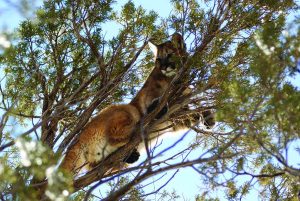
Tracing Networks
So, where to from here? We asked Dr Carver about his future research plans. ‘Increasingly,’ he replied, ‘my research is moving toward investigating mechanisms of disease transmission and control in wildlife populations. This is undertaken using computer simulations and field experiments. This work also involves close collaboration with molecular biologists and veterinarians.’
As can easily be seen, Dr Carver’s work is both multidisciplinary and broad in scope. His research touches upon diseases in wild animals, in domestic animals, in humans, and the many ways in which they can spread from one to another. This research gains ever more importance as human impacts on the environment continue to spread further into previously wild areas, leading to increased contact with wild species and thus higher chances of new diseases and pathogenic spread. Through their work on the spread of disease, Dr Carver and his team are trying to sustain a better future for the fascinating yet fragile wildlife of Australia, while supporting domestic animal and human health.
Meet The Researcher
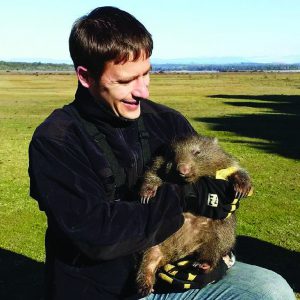
Dr Scott Carver
School of Biological Sciences
University of Tasmania Hobart,
Tasmania
Australia
Dr Scott Carver began his scientific career in New Zealand with a focus on amphibian disease. He subsequently continued to pursue and expand his interests, becoming a successful researcher in the field of wildlife ecology and epidemiology. He has over 60 publications to his name of which almost 20 were published in the last two years. His research group and collaborations are funded through a number of agencies to the value of several million dollars. This research has been the subject of numerous television and radio programmes, and online and written articles.
CONTACT
E: scott.carver@utas.edu.au
T: (+61) 3 6226 2794
W: http://www.utas.edu.au/profiles/staff/zoology/scott-carver
KEY COLLABORATORS EXTERNAL TO UTAS
Sue VandeWoude, Colorado State University
Kevin Crooks, Colorado State University
Meggan Craft, University of Minnesota
Chris Funk, Colorado State University
Adam Polkinghorne, Sunshine Coast University
Peter Timms, Sunshine Coast University
MAJOR FUNDING BODIES
Australian Research Council US National Science Foundation Diverse funding sources from smaller agencies
RECENT NOTABLE PUBLICATIONS
S Carver, SN Bevins, MR Lappin, EE Boydston, LM Lyren, M Alldredge, KA Logan, LL Sweanor, SP Riley, LE Serieys, RN Fisher, TW Vickers, W Boyce, R Mcbride, MC Cunningham, M Jennings, J Lewis, T Lunn, KR Crooks, S Vandewoude, Pathogen exposure varies widely among sympatric populations of wild and domestic felids across the United States, Ecological Applications, 2016, 26, 367–381.
S Carver, JN Mills, CA Parmenter, RR Parmenter, KS Richardson, RL Harris, RJ Douglass, AJ Kuenzi, AD Luis, Toward a Mechanistic Understanding of Environmentally Forced Zoonotic Disease Emergence: Sin Nombre Hantavirus, BioScience, 2015, 65, 651–666.
DM Tompkins, S Carver, ME Jones, M Krkošek, LF Skerratt, Emerging infectious diseases of wildlife: a critical perspective, Trends in Parasitology, 2015, 31, 149–159.
S Carver, AV Scorza, SN Bevins, SP Riley, KR Crooks, S Vandewoude, MR Lappin, Zoonotic Parasites of Bobcats around Human Landscapes, Journal of Clinical Microbiology, 2012, 50, 3080–3083.

